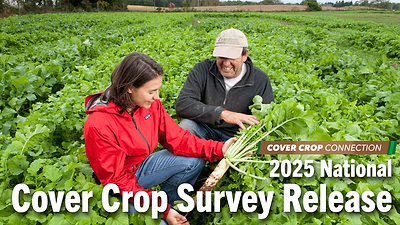Farmers are reporting crop damage from voles (field mice). Oval bare patches and burrows in soybeans or wheat fields indicate voles are present. Vole populations peak every 2-5 years. Cold harsh winters (2018, 2019) were the vole bottom and populations rebounded due to a mild 2020 winter. Snow and crop residue insulate voles against the cold. Voles do not hibernate but they need 40 percent more energy to survive cold winters. It is now time to view crop damage and to devise a plan to reduce vole damage next spring.
Voles are 3-7 inches long, with short ears, small eyes, short tails, and brownish gray fur. There are two types of voles (meadow vole, prairie vole) that cause crop damage. Meadow and prairie voles are similar in appearance except prairie voles may have a yellow belly. Prairie voles’ mate for life and are normally seen in pairs, while meadow voles are usually alone. Highly prolific, meadow voles have 4-8+ litters per year, up to 11 young per litter under optimal conditions of food and shelter, and average 40-50 young per year. They wean their young in 12-14 days and their offspring may reproduce in 21 days. Prairie voles have 2-4 litters per year with 20-30 offspring and their young reproduce in 35-40 days. Prairie voles have higher survivability while meadow voles have greater than 80 percent mortality. Most voles live only 6-18 months, reproducing quickly when food and shelter are abundant.
Voles generally live in .25 to 1.5- acre areas. They eat seeds and vegetation that have a high protein (nitrogen) content or low carbon: nitrogen ratio like soybeans. In early spring, voles eat newly emerging seedings or dig up the seed. They graze soybean stems 6-10 inches up the stem. They feed every 2-3 hours, staying close to their nest or burrow. In mid- summer, when the vegetation grows high and food becomes scarce, voles migrate out, up to 2 miles away. They may return in late summer early fall, when crops are harvested.
Voles are considered a keystone mammal because they are a food source for many predators: hawks, owls, falcons, fox, coyotes, etc. To combat voles naturally, place 10-foot high iron fence posts with a bar as a perch around clusters of vole activity. Owls, hawks, eagles, falcons and many birds of prey use perches as an efficient way to scout and gather food. The American falcon or kestrels are great vole predators. Perches can be installed after harvest, but keep a map of where they are posted and paint the perches a bright color. Deer like to rub against the posts and knock them over and no one wants to run a steel post through their equipment. Coyotes eat more voles but have a large 20 to 30-mile scavenging range while foxes stay in a much smaller area. Avoid over hunting if vole populations are high.
In these COVID 19 times, some farmers have invented a new sport. Rat terrors and about 10 dog species are great “terrors of rats and mice.” A Michigan farmer with 3 rat terrors reported killing 250 voles in two hours. He helps the dogs by taking a shovel and disturbing active burrows so the voles flee, increasing his vole termination rate. In summer, voles are most active at night, right before sunset, or as the sun comes up. In the winter, they feed during the day, often under the snow. A word of caution, small dogs make great pets and hunters but do not allow them to lick your wife or kids after a vole hunt! Voles carry many diseases harmful to humans.
Modifying food and shelter are key strategies to reducing vole populations. Fall mowing of ditches, waterways, cover crops, and other tall vegetation down to 8-12 inches increases predation by birds and mammals. Rotary hoeing in the fall or early spring (especially early morning or before sunset) disrupts nests and terminates many voles. At harvest, use chaff choppers to spread crop residue evenly over the whole field. Cover crops should be a 50 percent live-50 percent winter killed mix and should be drilled, not broadcast. Tillage and poisonous baits are only 50-60 percent effective, so good vole control requires a combination of management practices. New Alert: If vole populations are increasing, so are slugs because they like the same habitat! For more information, see hoormansoilhealthservices.com for factsheets and power points on vole and slug control.



